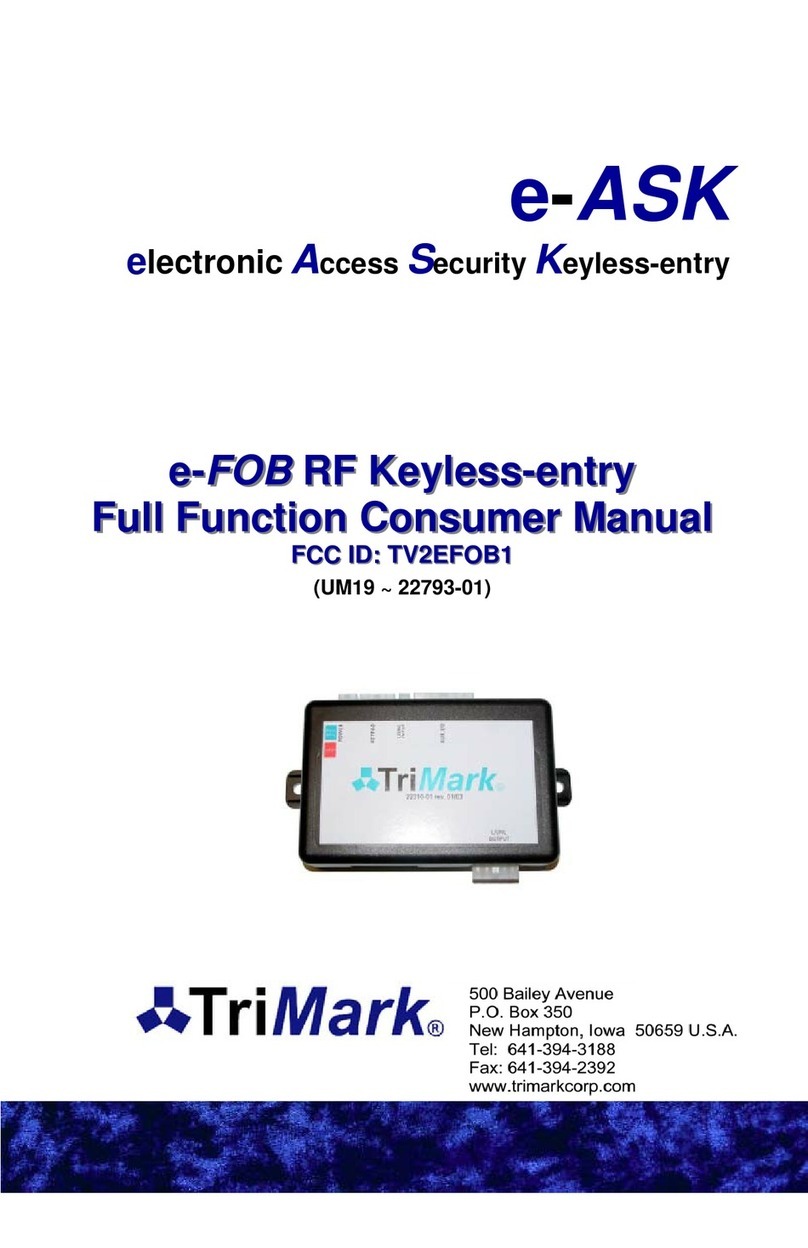
Teaching Keypad New Authority / Access Codes
The following procedure assigns an authority and access code. The 5-
digit access code is assigned to position one. The same 5-digit code is
assigned to the authority and access codes. If the attempt to assign new
codes fails, previous authority and access codes remain active.
1. Plug the LED into C6 and the push button into C7 on the
receiver.
2. Turn ignition on (12V at yellow wire of C1) and disarm alarm.
3. Press and release the programming button 3 times. Wait 3
seconds. The keypad will beep for 5 seconds.
4. Enter a 5-digit code. (Double chirps after each button press).
The keypad chirps 3 times after the 5-digit entry.
5. Re-enter new code for confirmation. The keypad will chirp four
times after successful confirmation. A long beep indicates failure
to change codes.
6. Confirm the new access code.
The user is given 2 minutes to complete this procedure. If it isn’t
completed in time, or an error is made, the system will exit learn mode
and a long chirp will sound to indicate the error.
Important: Authority and access codes should not be the same. If
someone figures out an access code and discovers it to be an authority
code as well, they can create their own access code and gain entrance
to your vehicle.
Notes:
• The authority code is to be controlled by individuals (owners of
vehicle, fleet manager, etc.) who manage the distribution of
access codes to vehicle users.
• The authority code should be changed when the vehicle is sold.
• The authority code does not enable secure functions (lock/
unlock doors, etc.)—it is only used to assign access codes.
• Doorbell systems only allow codes using buttons 1-4 and
provides for 4 unique access codes.
The following area can be used to document the authority code:
7
Digit 1 Digit 2 Digit 3 Digit 4 Digit 5
Authority Code




























